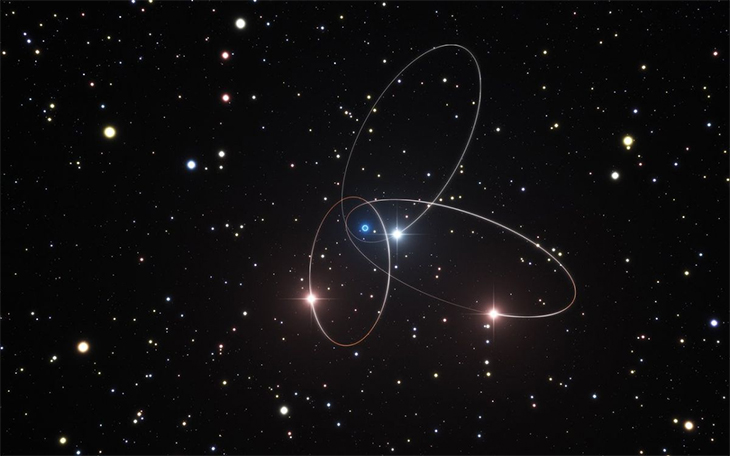By: Karla Lant/Futurism New analysis of data from the ESO’s VLT and other telescopes reveals stars orbiting near the supermassive black hole at the center of the Milky Way exhibit relativity effects. Future analysis may reveal more support for relativity and new physics.
NEW OBSERVATIONS
Scientists have applied new analytical techniques to data gleaned from the European Southern Observatory’s (ESO’s) Very Large Telescope (VLT) and other telescopes over the past twenty years. This new analysis of the stars orbiting the supermassive black hole at the heart of the Milky Way reveals movement that deviates from what classical physics would predict, supporting instead the subtle effects predicted by Einstein’s general theory of relativity.

Image Credit: ESO
NEW PHYSICS?
The VLT’s near-infrared adaptive optics instruments provided the highly accurate positional measurements that were vital for the study to succeed. The accuracy of these measurements was essential, especially during the period when S2 was further away from the black hole, because that data allowed the team to accurately determine the starting shape of the orbit and how it changed as relativity influenced it. This new work also provided more accurate measurements of the black hole’s distance from Earth and its mass.
This research heralds a thrilling time for astronomers around the world observing the Galactic Center. During 2018, the GRAVITY instrument, installed on the VLT Interferometer, will be ready to measure the orbit of S2 as it passes very close to the supermassive black hole. This should reveal not only relativistic effects with more clarity, but perhaps even new physics, as astronomers detect deviations from general relativity.]




